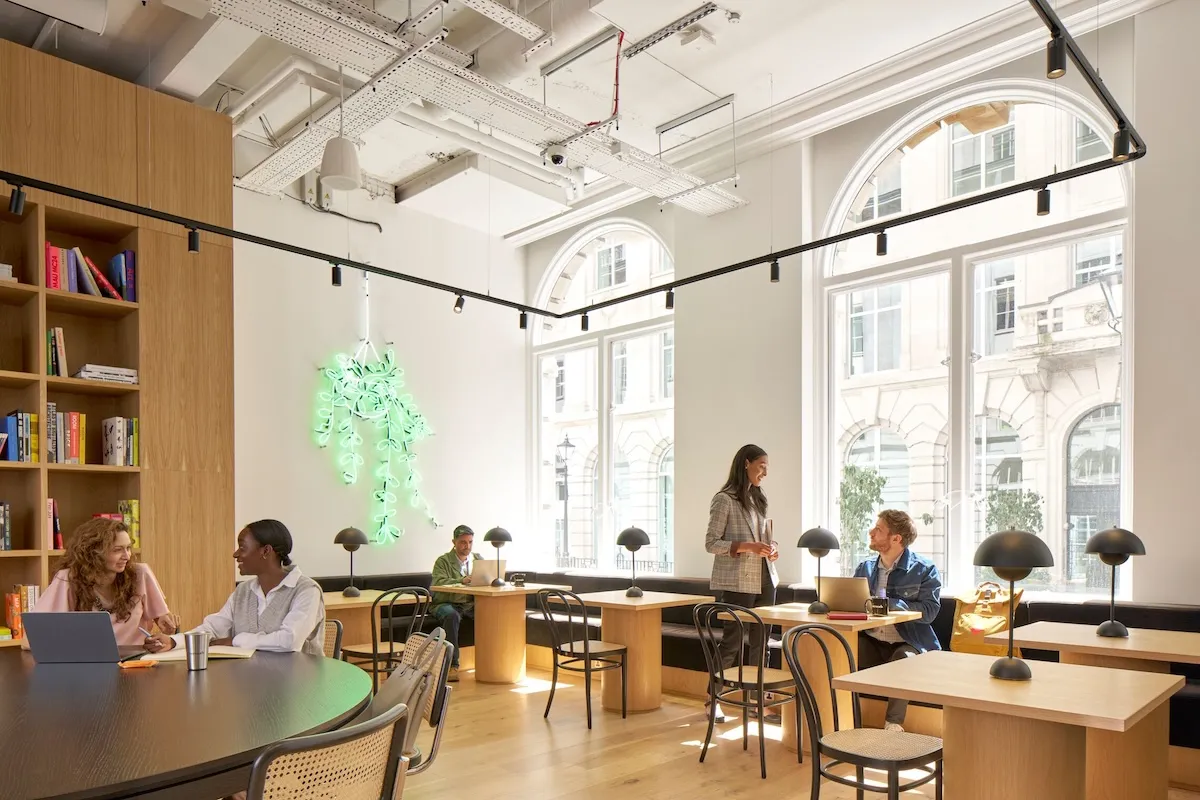It’s rare, that magical moment when the work, the people, the benefits, and the energy all align. It’s rare, but it is possible. When people feel comfortable in a space, when they feel valuable, when everyone feels like the work actually matters, that balance is never an accident. Someone (usually lots of people) worked to build that extraordinary workplace culture, otherwise known as organizational culture.
What is organizational culture?
Organizational culture is a term used to describe the way people define the values, goals, and overall vibe of their office. Founders and HR leaders usually develop and evangelize the culture, but it’s a constantly changing, employee-powered concept. These values should resonate with employees and make them feel like their work matters and rolls into a larger purpose. Organizational culture is both how organizations get things done, and why. It’s what makes the difference between a team of hardworking, happy employees and a group of grumpy strangers.
Qualities of great organizational culture
Companies with strong organizational culture tend to be the kind that people dream of working for. These businesses have a set of values that don’t just live on a poster in the kitchen. Rather, employees at these companies are able to easily articulate what their company does and why they do it. The organization has a personality.
In addition to having a clear mission, companies with strong organizational culture see transparent communication between leadership and employees, and collaboration among peers. Employees know what’s going on within the company and why certain decisions are being made. They’re ready and eager to help their fellow employees, even when a project falls outside their day-to-day responsibilities. These companies also tend to provide their employees opportunities for growth, with strong internal development programs and clear career ladders. Employees feel supported, valued, and in the know.
Why organizational culture is important to your company
The odds are stacked against a healthy culture: 85 percent of employees are actively disengaged from work, and one-third of employees plan to quit in the next year, according to a 2019 study. Another 2019 study found that employee loyalty has dropped across 20 industries, and people cited weak company culture as the culprit.
Lack of engagement means folks aren’t really working—or aren’t working to the best of their abilities. Wavering loyalty means employees don’t find value in the organization’s goals, or they don’t trust leadership; this leads to lots of turnover. And if you don’t like your job and don’t trust leadership, you’re definitely not persuading anyone to join the team, which makes it harder and harder for HR to find new employees.
A positive organizational culture can improve talent acquisition
Balancing a healthy culture is tough but not impossible, and lots of organizations have cracked the code. In a surprising leap to the top, Hilton was first on Fortune’s list of 100 best companies to work for in 2019. The year before, they had come in 33rd; a focus on diversity and inclusion, a free GED program, and updated worker lounges were cited as agents of change. In other words, Hilton gave their employees a reason to be proud (improved diversity and inclusion); access to real benefits (education); and a comfortable, welcoming working environment (employee lounges).
Data shows some good news, too. One study found that 81 percent of millennials want companies to be good corporate citizens, and 62 percent of them would take a pay cut to work at a socially responsible organization. Another study found that a majority of employees looking to leave their jobs are looking to work for companies with a mission that matches their passion.
Sometimes culture changes over time, and sometimes culture changes in two years: Salesforce has been on Fortune’s best places to work list for several years running. Its big move? Spending $6 million over the course of two years to fix the gender- and race-based pay gap at all levels of the company.
Five steps to developing great organizational culture
A multifaceted concept like organizational culture doesn’t lend itself to easy fix-its. There will never be a Band-Aid for bad culture, but there are certainly areas to focus on—where change really can happen.
1. Start by assessing what employees value
While organizational culture comes from the top, it’s meaningless if it doesn’t reflect employee values. Start by assessing how employees honestly feel about their work and the wider organization. There might be some work to do, but it’s important to understand what people are feeling and how they think about the organization. Focus on what they find exciting and motivating about their work. Look for common themes, and start building a mission that combines your vision with those insights.
2. Develop the company’s mission
Sometimes that mission is simply to provide something, like bedsheets, to customers. But when that mission becomes “deliver simple, beautiful home essentials at a fair price, with a personal touch” (thanks, Brooklinen), suddenly the people who work for your company aren’t just selling sheets—they’re selling quality, simplicity, beauty, and honesty. And so are you. If everyone embraces that mission, your company reflects it. Don’t overcomplicate it, but make sure your mission is unique and authentic. What makes your company stand out from the competition? These words will be your guiding light.
3. Both leadership and the workforce should carry the torch
Lots of emphasis is placed on leadership when it comes to setting the terms of company culture, and without a doubt, you can’t have a healthy culture without leaders who live it. But there are plenty of companies who survive leadership changes or mergers without sacrificing their culture, and that’s because employees carry the torch. A balance between employees and leadership is required to maintain a healthy culture. Employees will often point in the direction of change, sometimes loudly, and it’s up to leadership to listen and to act.
4. HR must reinforce and oversee culture
In the best-case scenario, human resources is a bastion of healthy culture and the link between employees and leadership. Think of HR as the stewards of culture. They’re also responsible for hiring, the single most important way to build and change culture: with people. If your new hires are excited to work and believe in the company’s mission, you’re more than halfway there.
5. Invest in a space that matches your culture
It’s the first thing visitors notice and the quickest way potential candidates read the culture at your company: the office. We all know location matters, but so do colors (they have the power to change moods and boost productivity)—even the width of the stairs matters. According to WeWork’s former architecture discipline lead Michael Caton, the stairs at 620 Avenue of the Americas are “designed to be as narrow as they can be by New York City building code, [so that] you can’t absentmindedly walk by other people—you have to engage with them, acknowledge their presence.”
Your space can even play a role in shaping your company culture. When GE Healthcare Korea was looking to cut real estate costs, it also saw an opportunity to inspire more flexibility and collaboration among employees. The company designed a bright, new office with open seating and various collaboration areas. The result: “We achieved a cost-saving project for GE while achieving cultural transformation to collaborate better together,” says Francis Van Parys, former president and CEO of GE Healthcare Korea.
That’s the power of space to build connections and a sense of belonging, one of the fundamental aspects of a healthy organizational culture.
This article was originally published on July 8, 2019, and has been updated throughout by the editors.
Rachel Miller is a writer based in New York. She specializes in both editorial and UX copy, and her work has appeared in Brooklyn Magazine, The Guardian, The Awl, and more.
Rethinking your workspace?










